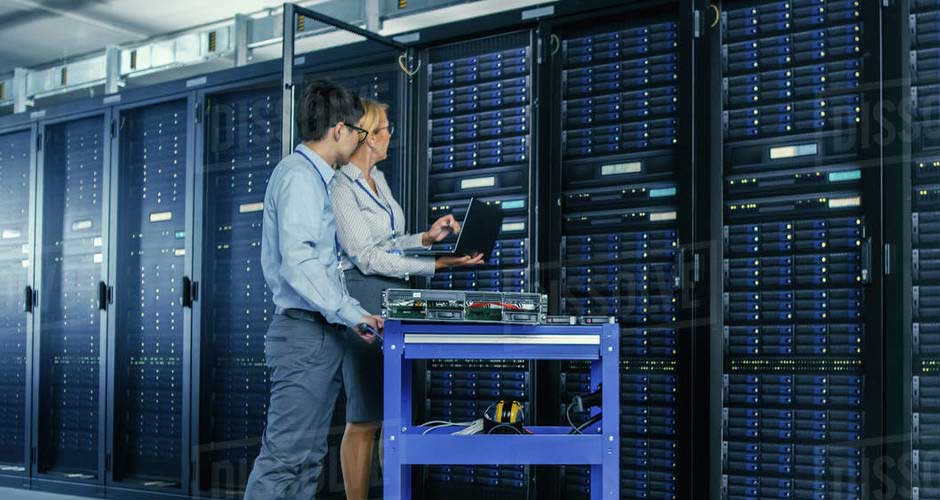Having an IT infrastructure and setting up a server room is crucial for any organisation. This system’s heart is server room racks holding servers, networking devices, and streaming storage. Installing server room racks helps ensure the environment remains efficient, reliable, and scalable. In today’s guide, you will learn how to select the proper server room racks and prepare for optimal performance and scalability in your IT infrastructure management.
The Importance of Server Room Racks
Server room racks hold the technical equipment that powers digital operations for a business. Servers and other equipment racks, routers, and switches all in a way that is easily accessible to make the most of your space with ample ventilation, cooling and cable management. Well-placed racks reduce the potential for downtime, improve security and enable IT infrastructure scalability.
Choosing the Right Server Room Racks
Select server room racks that are appropriate for your organisation’s needs before setting up. Take into account the following elements:
- Rack Size and Capacity:Server racks can be any of various sizes, and those sizes are based on units (U), with each unit being 1.75 inches tall. Standard sizes would include 42U, 45U, and 48U, select racks based on immediate equipment needs, and expansion with rack depth to fit a variety of depths used by the different types of IT equipment.
- Rack Types: Server room racks are categorised into open-frame, enclosed, and wall-mounted options. Open-frame racks allow airflow and access without compromising cooling space, while closed racks are secure and dustproof, suitable for smaller areas or satellite locations.
- Weight Capacity:All racks have a weight capacity. Make sure the rack you decide on can support all of your equipment. However, overloading the racks can result in structural failure, which will only break costly hardware and cause significant damage.
- Cooling and Ventilation: Cooling is necessary to prevent overheating not just us but also your equipment, lowering its lifespan. Opt for racks that come with airflow options, such as perforated doors and integrated fans or built-in cooling solutions.
- Cable Management:Effective cable management is critical for any server room that aims to be organised and productive. Choose racks with built-in cable trays, hooks and organisers. This results in improved airflow and ease of diagnosis and servicing.
Preparing the Server Room
Ensure the server room is prepared with the appropriate racks to ensure smooth installation and minimise errors.
- Space Planning: Measure space in the server room, plan the layout to fit enough racks and airflow, and provide easy access to equipment. Provide at least three feet of explicit space in front and behind each rack for servicing needs and the simple fact that they breathe.
- Flooring:The server room floor should be solid and support racks and equipment for servers. Floating floors are ideal for targeted air, especially in data centres or cable management facilities with grated finishes on separate floor plates where no other option exists.
- Power Supply:The power should be guaranteed if it does not fail. Protect from power issues with a UPS (uninterruptible power supply). Distribute power properly so you do not trip circuits, and use racks to install PDUs and power strips.
- Cooling Solutions: To prevent overheating, ensure proper temperature monitoring, install cooling units with adequate capacity, position exhaust vents for efficient airflow around racks, and consider hot and cold aisle containment for improved cooling efficiency.
- Security Measures:Install door locks, cameras, and access controls to monitor sensitive equipment in specific rooms. Lock down the equipment with locking doors or enclosed racks for extra security for mission-critical devices.
Installing Server Room Racks
After getting your server room together, the next step is installing all the server room racks. To ensure a seamless installation procedure, adhere to the following steps:
- Positioning the Racks:Start by placing the racks according to your space planning. Make sure the racks are level and solid. Levelling feet or anchoring the racks to the floor can stop such an accident.
- Grounding the Racks:Proper grounding is essential to avoid electrical hazards and protect equipment grounds. Use grounded wires to connect racks to the common ground, allowing excess charge generation and dissipation risks.
- Installing Equipment:Start the installation from the bottom with the heaviest items for more excellent stability. When not mounting equipment inside a rack, use rack shelves and secure each with the correct hardware to prevent shifting.
- Cable Management: During installation, route cables carefully and use ties, velcro straps, and management trays. Label each cable for easy identification, as proper cable management improves airflow and simplifies service.
- Power Connection: Power up equipment via power strips or PDUs and place load in balance without excess loading. In PDUs with monitoring, monitor power consumption and detect problems!
Final Checks and Maintenance
Once racks are in place and equipment is set up, do a final run-through to test everything. Check connections, wire management and cooling. Cleaning each year, proper cable management, dust inspections, and periodically checking the cooling system are also important. Invest in new equipment and replace older ones when technology is outdated.
Conclusion
Server room racks are among the most crucial parts, and if they become chaotic, problems will result. You can establish a dependably efficient, expandable server environment by choosing the correct racks, readying the space, and implementing a systematic installation procedure. Regularly maintaining your server room will ensure that it can effectively support all of your IT requirements.
